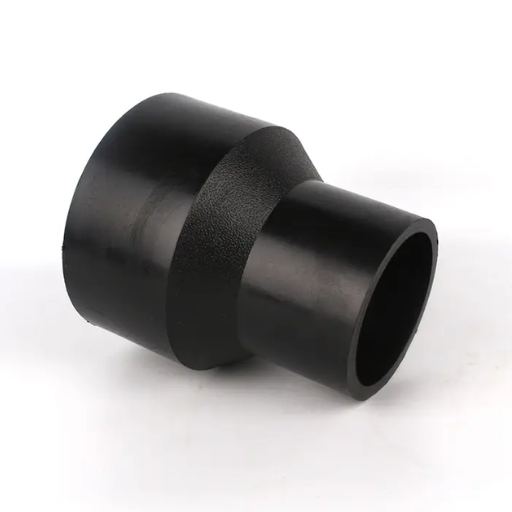Piping systems in the world need to be highly efficient and durable, incredibly when strong, permanent connections are needed. This, along with other topics, will be looked at more deeply in this article, which seeks to describe HDPE (High-Density Polyethylene) socket fusion as a tool to reduce couplers. Socket fusion is a process that involves heating pipe pieces and fittings, which are then joined together, forming a solid bond that runs through the system, making it stronger. These benefits include corrosion resistance, ease of installation, and the ability to withstand high pressure since they have become increasingly preferred among alternative piping solutions.
What is a Socket Fusion Reducing Coupler?
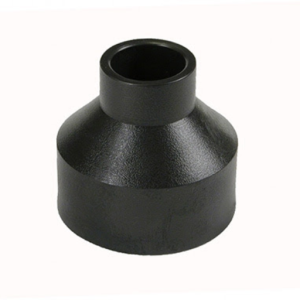
Image source: http://www.zjjunshan.com/
A socket fusion reducing coupler is a fitting design that allows for connecting different diameter pipes using the socket fusion technique. Such coupler types are made from HDPE material, which makes them robust against corrosion and degradation by environmental or climate factors. A smooth transition between two pipes is created by this type of coupling method, which has been melted into one using heat, ensuring consistent flow with reliable operations for optimized performance of this system. In cases where space is limited or when there are different sizes of pipes, these connectors come in handy because they offer secure yet flexible joints connecting variously spaced water distribution points.
Definition of Socket Fusion
Socket fusion is joining two thermoplastic pipes or fittings by heating their ends. Generally, a heating element melts the surfaces of the pipe and fitting, which cool down and fuse to form a solid and leak-proof joint. This technique has been applied in HDPE piping system installations due to its ability to establish seamless connections that can withstand harsh environmental conditions and high pressures and resist chemicals. It is an efficient choice for different applications since it increases the lifespan of piping installations and facilitates its installation.
How Does a Reducing Coupler Work?
The socket fusion technique allows a reducing coupler to connect two pipes with dissimilar diameters. Here, both pipes are heated using a particular heater until they melt at their ends. The soft tubes are then pushed against each other as their materials cool and solidify, creating a bond. This way, changes in pipe size are accommodated while ensuring a continuous flow of fluids, which is effective in maintaining solid joints that do not leak. By carefully determining their materials and sizes, reducing couplers enhances the versatility of pipe systems and guarantees dependability under various operating conditions.
Common Applications of HDPE Socket Fusion Fittings
HDPE socket fusion fittings are extensively applied in various industries due to their durability, flexibility, and corrosion resistance. This includes:
- Municipal Water Supply: HDPE is a popular choice for drinking water systems. It combines a long service life with the ability to tolerate environmental factors without compromising water quality.
- Wastewater Management: Such systems can also be used for sewage and wastewater applications requiring a material capable of handling aggressive conditions typically encountered.
- Irrigation Systems: In agricultural setups, these fittings are used in efficient irrigation systems since they enable reliable delivery of water to crops while minimizing spillage.
These examples reveal how versatile HDPE socket fusion fittings are preferred for residential and commercial projects.
Why Choose HDPE Socket Fusion Pipe Reducer?

Selecting an HDPE socket fusion pipe reducer offers numerous advantages for piping systems. One such advantage is its sturdy structure that guarantees a leakage-free connection under extreme pressures, reducing the chances of failure. Moreover, HDPE’s resistance to corrosive substances and chemical agents makes it possible for the installation to function reliably in harsh environments, thus prolonging its service life. The flexible nature of HDPE eases installation even in confined spaces, while the reducing coupler ensures smooth transfer from one pipe diameter to another, which improves overall hydraulic efficiency. So, why would someone prefer an HDPE socket fusion pipe reducer? Its resilience, adaptability, and lasting output make it a wise investment.
Advantages of Using HDPE Over Other Materials
- Toughness: HDPE is renowned for its exceptional strength and impact resistance, which makes it less liable to cracking or breaking than other materials like PVC or metal. This durability allows HDPE to withstand severe weather conditions and high loads without losing its properties.
- Resistance to Corrosion: HDPE is naturally resistant to various chemicals and environmental factors, unlike metal pipes that could corrode over time due to rusting. Therefore, HDPE piping systems can keep their functions and appearances for a long time, thereby reducing the necessity of frequent replacements.
- Cost Efficiency: The initial cost of investing in HDPE systems is compensated by lower maintenance costs over time as they have a longer lifespan and are not easily damaged. Moreover, lightweight materials reduce the transportation costs of HDPE and simplify installation procedures, thus adding to savings.
For these reasons, many construction companies opt for High-density polyethylene in their projects due to its high reliability and effectiveness.
Cost-Effectiveness of HDPE Socket Fusion
In conclusion, HDPE socket fusion remains one of the most economical choices for pipe systems, considering both initial investment and future savings. Recent findings show that there is an efficient way through which fusions can be done, reducing labor charges because it is simple and fast. Furthermore, socket fusion joint types are leak-free, making them avoidable, costly repairs with no water wastage involved. Longer service duration coupled with the toughness of HDPE materials minimizes maintenance expenses and lowers replacement costs. Overall operational efficiency achieved by decreasing downtime and minimizing maintenance has been reported widely; hence, this technique provides a sensible option for many different needs. Consequently, these organizations should expect huge savings during the life cycle period of their pipelines.
Durability and Longevity of HDPE Pipe Fittings
Many sectors prefer HDPE pipe fittings due to their remarkable durability and resilience. The durability of such fittings depends, in part, on the fact that they can withstand extreme temperatures as well as tolerate aggressive substances. It is worth noting that the lifespan of HDPE fittings is over 50 years with little maintenance; this is reinforced by their resistance to UV radiation, chemicals, and abrasion. In addition, HDPE fittings are seamless, which reduces the chances of leaks, a quality that makes them ideal for both above-ground applications and below-ground installations. Conversely, rather than only having minimal life cycle costs of replacement, its prolonged service life limits repairs and replacement efforts, thus conserving the planet better.
How do you install a socket Fusion pipe reducer coupling?
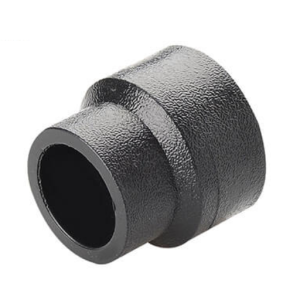
Fitting a socket fusion pipe reducer coupling involves several simple steps. Firstly, ensuring all components, including pipes and couplings, are clean from debris is essential. Secondly, heat the ends of the pipe and inside the reducer coupling using a socket fusion tool until both surfaces melt uniformly; usually, this will take between 30 seconds to one minute, depending on the diameter used. Once at optimal temperature levels, quickly align the pipe into the coupling, then firmly press them together to form a firm bond. Maintain it for a few seconds to let it cool down entirely through the solidification process, creating an unbreakable joint between the two pieces. Finally, look for errors or signs that there was no complete fusing before proceeding with the installation steps. When done correctly, this technique provides leakproof connections that maintain the same longevity commonly associated with HDPE fittings.
Necessary Tools and Equipment for Installation
To effectively install a socket fusion pipe-reducing coupling, here is what you will need:
- Socket Fusion Tool: This tool ensures that the pipe ends and couplings are heated to the precise temperature for bonding.
- HDPE Pipe and Reducer Coupling: Make sure that these parts match the size and material to be reliable.
- Cutting Tool: You need a saw or pipe cutter to cut HDPE pipes accurately to the desired lengths.
- Cleaning Supplies: Wipe away dirt and debris on the surface using some piping cloths.
- Measuring Tools: The tape measure is used to take the accurate length of the coupling and pipes.
- Safety Gear: Safety goggles will come in handy during heating, while heat-resistant gloves protect against burns.
With these tools, your installation process will be smooth and effective.
Step-by-Step Installation Process
- Preparation: Begin by measuring HDPE pipes with a cutter or saw. Cut them cleanly with no burrs.
- Cleaning: Use pipe cleaners with pads or clothes to remove dirt from both ends of the pipes and inside the reducer coupling before joining them together.
- Heating: Set up your socket fusion tool to attain the optimal operating temperature its manufacturer indicates. Inset both ends of pipes into it, ensuring they are well fixed together with coupling.
- Joining: Once they attain this, move them out of the heater and align one pipe end with its connection. Significantly push them hard until they bond properly.
- Cooling: Hold onto each couple of tubes for several seconds to give the joint time to cool down completely. Avoid tampering with an already-made bond until temperatures drop enough.
- Inspection: Allow adequate time to cool down once done. It should not be disturbed within this period.
-
Final Steps: Once your connections have been verified, you can proceed to further installation steps, making sure that all joints are properly fastened and non-leaking.
Common Mistakes to Avoid During Installation
- Wrong Heating Time: One common mistake is failing to heat the pipes and couplings for the right duration. Inadequate heating may result in weak joints that can break under pressure. Therefore, always follow the manufacturer’s recommendations on heating time.
- Poor Surface Preparation: It is not enough to leave pipe ends and coupling surfaces uncleaned, as this could introduce impurities that lead to poor fusion. Before applying heat, take a moment to clean all these areas thoroughly.
- Improper Alignment during Joining: Stress points emerge along a joint when the pipes are pushed together and misaligned with their couplings. These pieces should be aligned and firmly pressed to make an unyielding bond.
Follow these tips so your HDPE piping systems last long and become dependable.
What Are the Different Types of Reducers Available?
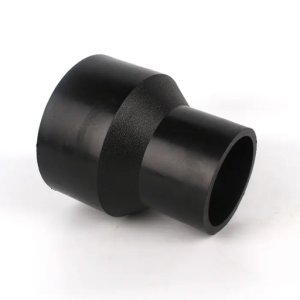
Reducers are essential constituents of piping networks as they facilitate change in pipe diameter.
- Concentric Reducer: Designed symmetrically with both ends along the pipe’s centreline; it is often employed where flow moves vertically, allowing for smooth changes.
- Eccentric Reducer: This type has one end slightly off-center, whereas concentric reducers lack such a feature. It well suits horizontal piping or applications that require no air pockets at the top level of the pipe.
- Fabricated Reducers: Built specifically for unique projects, fabricated reducers can be custom-made for any need or requirement. They are used when regular sizes are unable to meet requirements.
- Weight-Saving Reducers: These reducers have been designed using lightweight materials for easy handling and installation while maintaining strength and durability.
Understanding these types of reducers will help one determine which one best fits his/her specific situation, resulting in efficiency in functionality within a system.
Overview of Reducer Couplings
Reducer adapters are essential pipe fittings used in plumbing systems to join pipes of dissimilar diameters together without any obstruction. It helps to ease the changeover from one pipe to the other, thus reducing turbulence and promoting smooth flow. Reducer couplings are mainly made from durable materials like PVC, HDPE, or metal, and they are of various types, such as concentric and eccentric, depending on their intended use during installation. However, when choosing a reducer coupling, one must bear in mind that it affects the overall performance of the piping system; hence, it is vital to select an appropriate type based on aspects such as pressure rating and fluid type, among others. Proper installation of reducer couplings will, therefore, enhance the reliability and durability of a pipework system.
Comparison of Reducer Tee and Reducer Coupling
A reducer tee has different functions from a reducer coupling within a piping system, and understanding their variances is necessary for practical usage. Usually, a reducing tee allows three pipes with varying bore sizes to connect while simultaneously changing their direction like the elbow but combined with reduction into one fitting only. On the other hand, when there is a need for transition between two different-sized pipes along a straight line path so as not to affect the fluid direction, then this is where a reducer coupling comes in handy.
In terms of applications, you might use reducer tees when you want to divert flow through another branch since they are mainly required in complex piping layouts. In contrast, reducer couplings primarily handle straight-line connections without any disturbance caused by turbulences. The choice between them depends primarily upon specific piping needs, e.g., space requirements or flow directions; therefore, engineers should carefully assess these factors during the designing phase to come up with accurate conclusions about which ones would be most preferable under given circumstances.
Choosing the Right Fitting for Your Needs
If one wants to select the correct fitting for his or her piping system, he/she must take into account the particular demands of the application, including flow rates and fluid type, among others. As stated by industry professionals, it is essential to ensure durability and prevent leaks by considering pressure ratings and material compatibilities. Installation practices are critical to the long life of a system; this means that fittings should be put together accurately. Also, you may want to consult engineering guidelines or manufacturer’s recommendations before making an informed decision concerning your project’s requirements. Alternatively, consider working with a professional or knowledgeable supplier who can help you navigate these options to pick the best solution for your piping needs.
Where to Buy HDPE Socket Fusion Products?
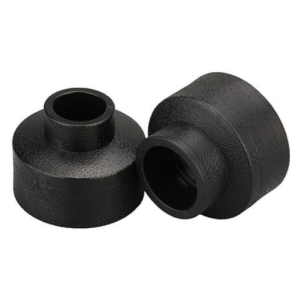
There are many places where people can purchase HDPE socket fusion devices, such as specialized plumbing supply stores, industrial supply companies, and online sellers. Sometimes, websites like Amazon, Grainger, and some HVAC and plumbing suppliers host several HDPE fittings and fusion equipment items on their pages. Moreover, local plumbing materials distributors often stock such goods; hence, it is advisable to contact manufacturers directly to avoid violating standards set by relevant industry bodies while purchasing genuine products from them. Some factors, such as pricing and availability, may also matter when selecting a provider so that the above statement defines what suits any purpose.
Popular Brands for HDPE Socket Fusion Fittings
Several brands remain perennial favorites with industry professionals regarding reliable HDPE socket fusion fittings. To begin with, Sidewinder is known for its solid and inventive solutions and has a wide range of HDPE fittings with high durability ratings. Additionally, Shurjoint makes high-quality products that are dependable for many applications, which has become the preferred choice by most contractors. Lastly, Muni has an extensive collection of HDPE socket fusion fittings meant to be efficient and easy to install, thus earning positive feedback from users. These companies offer some of the best options in terms of quality and performance in piping projects.
Online vs. Local Suppliers: Pros and Cons
Each option has different advantages and challenges when comparing online versus local HDPE socket fusion fittings suppliers.
Online Suppliers:
- Pros:
- Ease: This saves time since you can shop at home and compare prices easily.
- Range: Online sellers generally offer a wider variety of items, including niche ones that are unavailable locally.
- Reviews: Accessing customer reviews can help you decide what to buy more wisely.
- Cons:
- Freight Charges: Products’ prices may increase because they will incur shipping costs, especially if they are heavy.
- Lead Times: Delays can impact project schedules if the items are urgently required.
- No Immediate Assistance Available: Instant guidance or advice during selection might not be available through online buying.
Local Suppliers:
- Pros:
- Immediate Availability: There is no wait time for delivery since items can be picked up immediately after purchase.
- Personal Touch: It becomes easier to understand product specifications and applications through face-to-face consultations
- Supporting Local Business Community: Locally purchased goods aid nearby businesses’ growth while forming stronger community connections.
- Cons:
- Limited Range: Some brands or special types might not be in the stock held locally, limiting options.
- Expensive Prices: Physical store setups raise operating costs, resulting in higher pricing for local products than those bought from the internet directly at affordable prices
- Accessibility Limitations: Going to multiple places may be time-consuming.
To sum up, your specific requirements regarding convenience, choice, cost, and project schedules can determine the decision between online and local suppliers of HDPE socket fusion fittings.
Price Comparison for HDPE Pipe Fittings
For a comparison of HDPE pipe fittings prices, these are the three websites right now:
- Home Depot: It is one of the largest retailers for home improvement and has a wide range of HDPE fittings at competitive prices. There are often discounts on massive shipments. also, they have membership incentives, which makes them ideal for big projects.
- Grainger: This company specializes in industrial products such as HDPE pipes and fittings. Its pricing, however, is higher given the high quality and reliability of its products. In addition to offering customer support services, the firm provides comprehensive product descriptions to assist customers in purchasing decisions.
- Amazon: Amazon offers a variety of products from different sellers with varying price tags. While some are priced competitively, shipping costs and time must also be considered. User reviews may contain helpful information about the product quality or availability sellers provide.
Considering these three choices, you can identify the best price conditions and purchase terms for your project goals.
How to Maintain HDPE Socket Fusion Fittings?
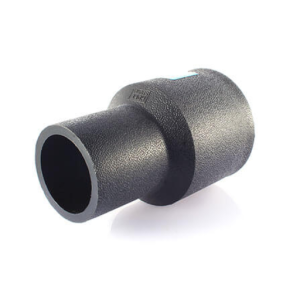
Maintaining HDPE socket fusion fittings is crucial so they last longer while performing well. Some critical practices include the following:
- Regular Inspection: Fittings should be checked occasionally for wear, cracks, or leaks to detect problems early enough before they become worse.
- Cleaning: Keep dirt away from fittings using a mild cleaning solution, such as a soft cloth and non-rusting detergent.
- Avoid Overexertion: Do not apply an excessive amount of force to the fittings, as this can cause stress and failure.
- Temperature Awareness: Extreme temperatures affect HDPE; thus, exposing them to heat sources can weaken their strength.
- Proper Storage: Store them correctly when not in use to prevent deterioration due to moisture or external factors like heat.
Follow these maintenance tips to make your HDPE socket fusion fittings last long.
Regular Maintenance Tips for Longevity
To increase HDPE socket fusion fittings’ durability, adopt the following common preventative maintenance tips:
- Routine Checks: Make regular inspections to check for damages, such as cracks or leaks, and solve any issues promptly to avoid long-term problems.
- Thorough Cleaning: Periodically wash connectors using a mild detergent and soft cloth; avoid harsh solvents and abrasive substances that might damage them further.
- Avoid Mechanical Stress: Ensure that the units are not subjected to excessive mechanical stresses or pressures. Proper installation and support can prevent premature unit wear.
- Temperature Control: Store fittings and use within the given temperature range to prevent distortion/melting due to extremely low or high temperatures.
- Protective Storage: When not in use, store these items at ideal room temperature so they are not exposed to environmental factors that could damage them.
Following these instructions will significantly prolong the service life of your HDPE socket fusion fittings.
Identifying and Addressing Common Issues
Knowing potential issues is a must while working with HDPE socket fusion fittings. These are the common problems and their solutions:
- Leakage at Joints: Leakage is one of the most common problems due to insufficient fusion. To prevent this, ensure the temperature and timing of the fusion process are right. Check for misalignment on the joint and proper fittings in case of any leaks; otherwise, it may be necessary to refuse or replace it.
- Fitting Deformation: Exposing fittings to extreme temperatures can lead to deformation. Rather than subjecting them to high temperatures for long periods or exposing them to direct sunlight, try as much as possible not to let such scenarios happen. If the fitting has been deformed, check whether it can still function effectively; otherwise, use a new fitting instead.
- Cracking or Fissures: This may result from mechanical stress or environmental factors. Don’t overtighten fittings during installation and ensure adequate support, which will prevent stress and reduce such risks. Regular inspections may help in the early identification of cracks, allowing replacement before major failures occur.
Being proactive about these common issues ensures that your HDPE socket fusion fittings remain effective and dependable.
Best Practices for Storing HDPE Products
Properly storing HDPE products ensures they maintain their quality and usability.
- Avoid Direct Sunlight: Place HDPE materials in shaded areas so they aren’t exposed to UV rays, which can weaken material integrity over time. If you cannot store outdoor items, consider using tarps or covers that filter UV radiation.
- Maintain Temperature Control: If possible, store HDPE products in climate-controlled spaces. Extreme temperatures can cause warping or brittleness, so maintaining moderate, stable temperature ranges should be an aim.
- Elevate Storage Containers: Use pallets, racks, or other methods to keep HDPE products off the floor so they do not absorb moisture and avoid damage due to floods or ground contaminants. This also enhances free air circulation around the materials.
- Stacking and Weight Distribution: When stacking, don’t go beyond the recommended weight limits, as too much pressure can cause deformation. Position heavier items at the bottom to minimize strain on lighter components.
- Regular Inspections: Check for wear, degradation, and pest infestations on a regular basis. This enables you to identify problems in time and prompt remedial measures that may lengthen your HDPE products’ lifespan.
Following these practices will significantly extend the life and effectiveness of your HDPE products.
Reference sources
-
ASTM International – Standard Specification for Polyethylene (PE) Plastic Pipe and Fittings Materials
https://www.astm.org/Standards/D3350.htm
This document outlines the standards for polyethylene materials used in manufacturing plastic pipes and fittings, including HDPE socket fusion-reducing couplers. It provides detailed information on material properties, ensuring the reliability and durability of the fittings. -
JM Eagle – Polyethylene Fittings
https://www.jmeagle.com/sites/default/files/PEFittings_web.pdf
This document outlines various polyethylene fittings, including socket fusion reducing couplers, their standards, sizes, and applications. It is a valuable resource for anyone needing detailed guidance on these fittings. -
ASTM International – Standard Specification for Socket Fusion Tools for Use in Socket Fusion Joining of Polyethylene Pipe or Tubing
https://www.astm.org/Standards/F1056.htm
This document provides standard specifications for socket fusion tools, ensuring polyethylene pipes and fittings are properly joined, including HDPE Socket Fusion Reducing Couplers. It is essential to understand the equipment and techniques involved.
Related Articles: Applications of Socket Fusion Reducing Coupler



